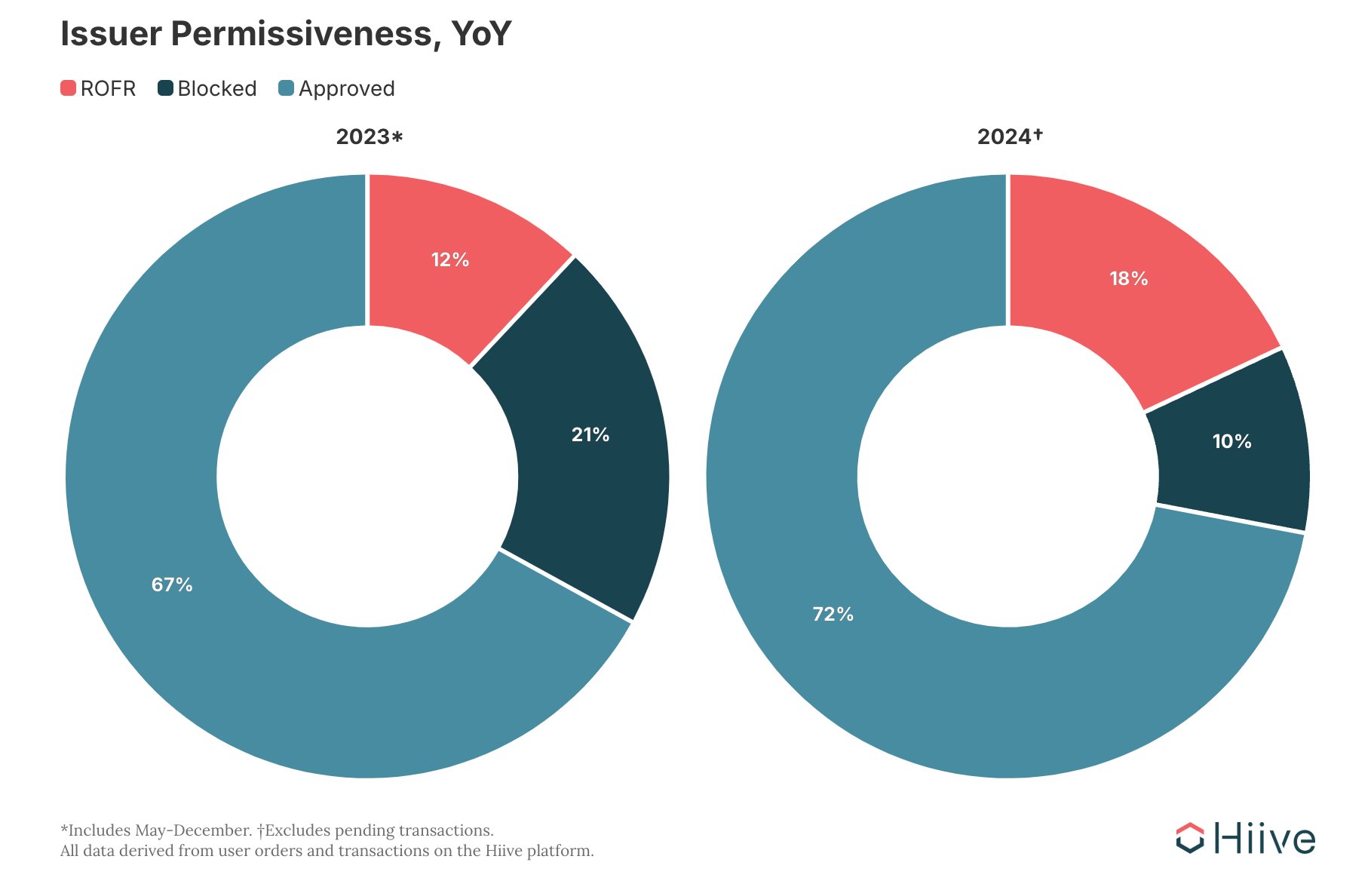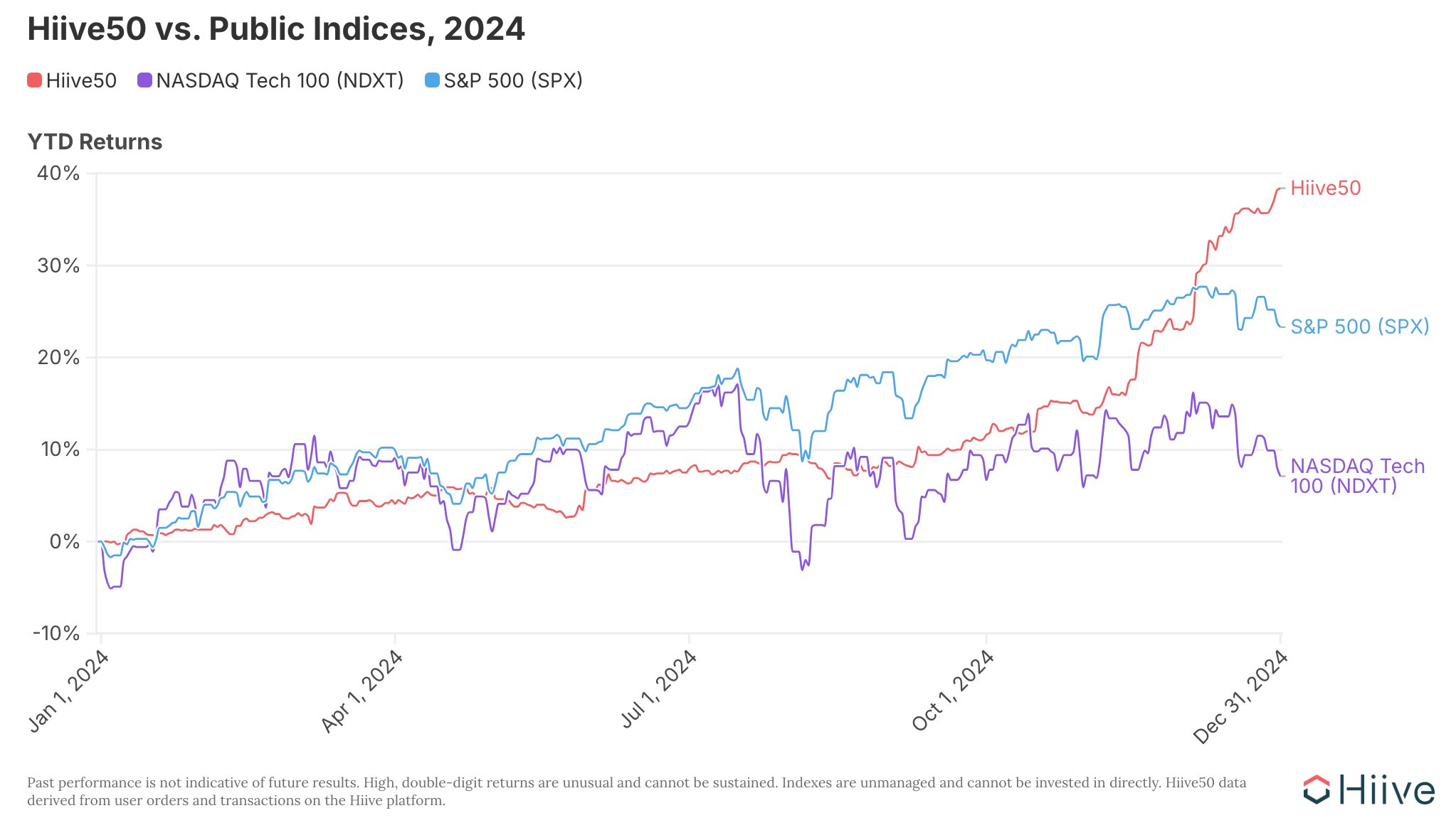Hiive Review: The Best Platform to Buy and Sell Private Stock?

Investing in private, high-growth startups is no longer just for venture capital firms and angel investors. Qualified investors can now invest right alongside them.
Hiive is currently the fastest-growing marketplace in the world for private stocks. Its model is based on:
- Transparency: See real-time bids and asks for every company on the platform, like a regular stock exchange.
- Direct access: There is no broker standing between you and the marketplace.
- Ease of use: The platform makes it simple to place a bid or list shares for sale. After reaching an agreement, Hiive handles the paperwork so the buyer gets their shares and the seller gets their cash.
However, the platform does come with some downsides, which will be discussed later in this review.
Yet, despite those, I haven't found a better platform for both buyers and sellers of private shares. Here's everything you need to know about Hiive.
Hiive review summary
- Overall rating:
- Description: A platform for buying and selling shares of private companies
- Best for: Buying and selling shares in tech startups before they go public
- Fees:
- None for buyers (on non-SPV transactions)
- Average ~4% of transaction value for sellers
- Minimum investment: $25,000
To qualify for Hiive, buyers must be accredited investors, and sellers must have shares available to sell.
Accreditation requirements
To qualify as an accredited investor, you must meet one of the following criteria:
- Have an annual income of $200,000 individually or $300,000 jointly.
- Have a net worth that exceeds $1,000,000, excluding your main residence.
- Be a qualifying financial professional.
What is Hiive?
Hiive (formerly Hiive Markets) is an investment platform for buying and selling shares of stock in private companies.
It was founded in 2021 by senior employees of Setter Capital, a private equity and venture capital brokerage firm.
Their goal was simple: to use the industry's established best practices while eliminating the lack of transparency traditionally associated with private market investing.
So they created Hiive, a platform that looks more like a regular stock market brokerage. The site displays real-time valuations based on bid, ask, or trade prices from confirmed buyers or sellers.
By the numbers:
- Investors: 12,000+
- Listed companies: 2,000+
- Monthly transaction volume: $100+ million
- Total value of live securities orders: $3+ billion
Hiive's business model
There are multiple business models for platforms that enable buying and selling private shares (known as “secondary marketplaces”).
In fact, almost every one of these marketplaces has a unique model and/or fee structure. Some of these favor the buyers, others favor the sellers, and others just favor the marketplace itself.
Linqto, for example, acquires shares from employees, marks them up, and re-sells the shares for a profit. This model can make transactions faster, but it also takes advantage of the lack of liquidity in the private markets.
This means that neither buyers nor sellers get the best price for their shares.
Hiive, on the other hand, functions much more like a traditional stock exchange. Sellers place asks and buyers place bids, and they can negotiate directly with each other.
Hiive provides a place for the two parties to meet, and then works as the transaction facilitator once an agreement is reached.
In this model, information flows freely, and the order book is completely transparent. All buyers and sellers have access to the same information, and no intermediary stands between the two.
Hiive also doesn't charge fees to buyers on regular transactions*, though it does charge fees to sellers for connecting them with buyers and facilitating the sale of their shares.
*Hiive does charge fees on investments in its SPVs.
Why is this important?
These two business models can lead to significant price differences for consumers.
Linqto and platforms like it want to sell shares for a profit based on the prices they paid for them, regardless of where the market price currently stands. Prices on Hiive are much more likely to reflect the current market value.
For example, a post on Reddit asked why shares of Ripple were listed for $46/share on Linqto and $20/share on Hiive.
The answer is likely due to Linqto acquiring the shares at a price higher than the current value and wanting to re-sell for a profit, while Hiive operates more like a regular stock exchange.
Hiive's model means its prices are likely to be better than Linqto's, but it does come with a few drawbacks. The main drawback to investing on Hiive is its minimum transaction size of $25,000.
I cover why the minimum must be this high in the section below.
Buying on Hiive
Hiive is the most transparent secondary marketplace. Its live order book gives buyers detailed access to trade data, so everyone is operating with the same information.
A few key features of Hiive are:
- Anonymity: You will remain anonymous until you're ready to complete a transaction.
- Price discovery: After registering, you can browse live listings (prevailing bids and asks) for every company on the platform.
- Direct access to sellers: You can place bids or negotiate directly with individual sellers. No broker will get in between you and the sellers.
- Seamless order execution: It's easy to place bids and message sellers. After striking a deal, Hiive's experts will manage the rest of the transaction process.
You can also create a watchlist of companies you're interested in and get notified anytime a new listing is made or a transaction is booked.
Buying fees
Buyers are not charged fees on regular transactions — only sellers pay fees (outlined below). There are no registration fees, transaction fees, holding fees, or management fees charged to buyers.
However, Hiive recently started offering investments via SPVs. Buyers are charged fees on the purchase of stakes in these SPVs.
Drawbacks to buying on Hiive
The primary drawback to investing on Hiive is its $25,000 minimum transaction size. Additionally, there are no funds to invest in, so you can only invest in individual companies.
Other platforms have lower minimum investments because they pool money together from multiple investors to acquire stakes, and then divide up the shares.
While allowing for lower minimums, pooling funds increases the legal risk and makes for more complicated transactions.
Hiive's exchange-like model takes a cleaner approach. Each transaction is a full stake — clients' funds are not intermingled.
While it is makes things simpler and more transparent, the model's high minimum is a legitimate downside and can be quite prohibitive.
That said, if you have a fair amount of money to invest and value the exchange-like structure of the marketplace, then Hiive may be a great option for you.
Selling on Hiive
The combination of a slower IPO market and private companies choosing to stay private for longer has created an uptick in the number of secondary sellers.
Current and former employees are choosing to liquidate some or all of their vested stock via the secondary market to turn more of their compensation into actual cash.
Additionally, venture capital firms and angel investors are also liquidating some or all of their positions to realize gains and free up capital.
When deciding which marketplace to use, sellers should consider a platform's liquidity, fee structure, pricing mechanism, and ease of transactions.
Here are a few things sellers should know about Hiive:
- Liquidity: There are thousands of investors looking for shares to buy on Hiive. After creating your listing, your shares will be discoverable by them.
- Fee structure: Sellers are charged a fixed and a percentage-based fee. Altogether, the total fees paid typically range from 4–5% of the total transaction value. You will see the total amount of fees you will pay before setting your price.
- Price transparency: Many secondary marketplaces use a “fishing” system where they try to find bids and then offer those prices to sellers. This restricts the flow of information and may result in lower prices being accepted. Hiive has a live pricing chart, so you can see what prices other sellers are asking and what buyers are willing to pay.
- Ease of transaction: Once you strike a deal, Hiive's team will handle the rest of the process until you get paid.
You will also stay anonymous until you're ready to connect with a buyer.
Selling fees
Sellers are typically charged a minimum fixed dollar amount and a percentage-based fee for successful transactions. No fees are charged unless there is a successful (closed) transaction.
On average, seller fees typically range from 4–5% of the total transaction value. This equates to $2,000–$2,500 on a $50,000 sale, leaving you with $47,500–$48,000 net.
Importantly, you don't need to pay anything up front. You only pay when you get the money from the sale.
As mentioned above, there are no fees for buyers on Hiive, only sellers.
Drawbacks to selling on Hiive
The primary drawback to selling your shares on Hiive is the fees, though this isn't unique to Hiive. You will pay fees for selling your shares on any secondary marketplace, regardless of which platform you choose.
The main Hiive-specific downside is that there's no definitive timeline for when your shares will be bought. You're listing your shares on a marketplace where buyers may or may not bid on them, and there are no guarantees.
This marketplace model gives you a good chance of getting a fair price for your shares, but other platforms may put cash in your hand faster.
For example, if Linqto were to offer to buy your shares, it may offer a price lower than what the shares are worth, but it would eliminate the time spent waiting for a bid.
If you appreciate Hiive's transparent order book and fee structure, I'd encourage you to register and see what your shares may be worth.
Pros and cons of Hiive
| Pros | Cons |
|---|---|
| Access to thousands of private, VC-backed companies | $25,000 minimum transaction size |
| Seller fees are only due after successful (completed) transactions | Seller fees average 4–5% of transaction value |
| Complete order book transparency for both buyers and sellers | |
| Anonymity for both buyers and sellers |
In our opinion, the pros far outweigh the cons, which is why Hiive is our top recommendation for how to invest in private companies.
What percentage of transactions close on Hiive?
In 2023, after accepting a bid, sellers were able to complete their sales 69% of the time. In 2024, that number increased to 90%.
These percentages include when a company use its right of first refusal (ROFR), which allows it to substitute itself or an existing shareholder into the place of the proposed buyer.* The ROFR increased from 12% to 18% from 2023 to 2024.
*So, if your bid is accepted at $25/share, a ROFR allows the company or one of its current shareholders the right to match that $25/share offer and buy the shares in your place.
So, excluding ROFR transactions, buyers on Hiive complete their transactions 72% of the time in 2024, up from 67% in 2023.

Source: Hiive
In 2024, just 10% of deals were blocked outright, down from 21% in 2023. Hiive expects this trend of companies allowing employees to sell their shares to continue because it leads to higher job satisfaction.
If you're wondering how these numbers compare to Hiive's competitors, I haven't found another company that shares their internal figures publicly, so it's impossible to make a comparison.
This is another example of Hiive's commitment to transparency, and may also indicate that the percentage of transactions that close is higher on Hiive than elsewhere.
Note: Hiive's most active securities are more likely to have accepted deals be approved, like those in the Hiive50.
What is the Hiive50?
The Hiive50 is an equal-weight index of the 50 most active securities on Hiive. The index serves as a barometer for the performance of the late stage pre-IPO market.
The Hiive50 Index outgained both the S&P 500 and NASDAQ 100 in 2024, returning 38.4%:
Source: Hiive
A few of the current members of the index include Cerebras Systems, Lightmatter, Kraken, Groq, and SpaceX. Here is the full list of constituents.
Hiive competitors
Here's a list of Hiive's main competitors and how they compare:
| Linqto | Forge Global | Nasdaq Private Market | EquityZen | Equitybee | |
|---|---|---|---|---|---|
| Investment minimum | $2,500 | $100,000 | $1,000,000 | $10,000 | $10,000 |
| Main benefit | Lower minimum investment | More trading volume | More tools available for institutional investors | Several multi-company fund offerings | May acquire shares for below market price |
| Main drawback | Shares tend to be more expensive | Higher investment minimum + buyer fees | Primarily for institutional clients | Fewer transactions and less liquidity | More complex investing model |
| Links | Linqto | Forge Global | NPM | EquityZen | Equitybee |
Remember, Hiive has a $25,000 investment minimum and its main benefit is pricing transparency.
Final verdict
Pre-IPO investing is becoming increasingly popular, but not all the marketplaces are created equal.
Regardless of whether you're a buyer or seller, you should pay special attention to the business models and terms of the platforms you're considering using.
In this aspect, Hiive is a clear winner.
Its stock exchange-like model with a focus on transparency is a stark contrast against most players in the industry.
Any views expressed here do not necessarily reflect the views of Hiive Markets Limited ("Hiive") or any of its affiliates. Stock Analysis is not a broker-dealer or investment adviser. This communication is for informational purposes only and is not a recommendation, solicitation, or research report relating to any investment strategy, security, or digital asset. All investments involve risk, including the potential loss of principal, and past performance does not guarantee future results. Additionally, there is no guarantee that any statements or opinions provided herein will prove to be correct. Stock Analysis may be compensated for user activity resulting from readers clicking on Hiive affiliate links. Hiive is a registered broker-dealer and a member of FINRA / SIPC. Find Hiive on BrokerCheck.







